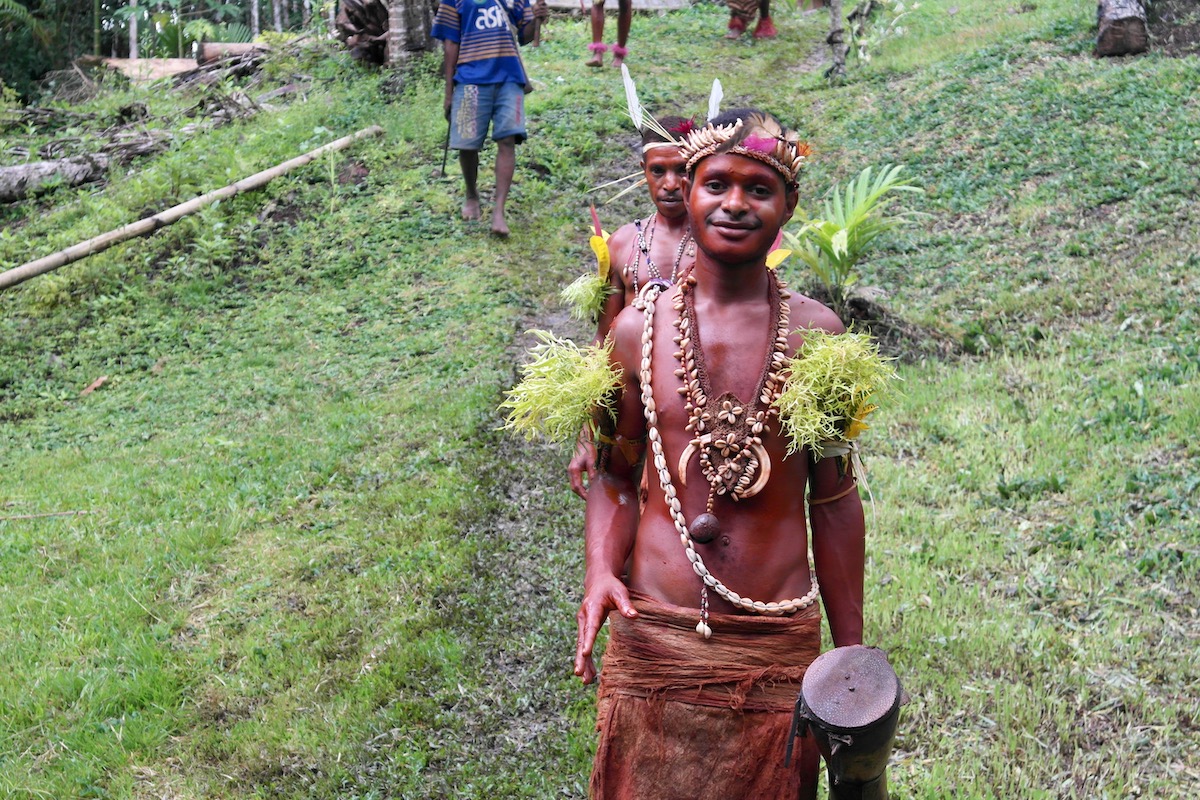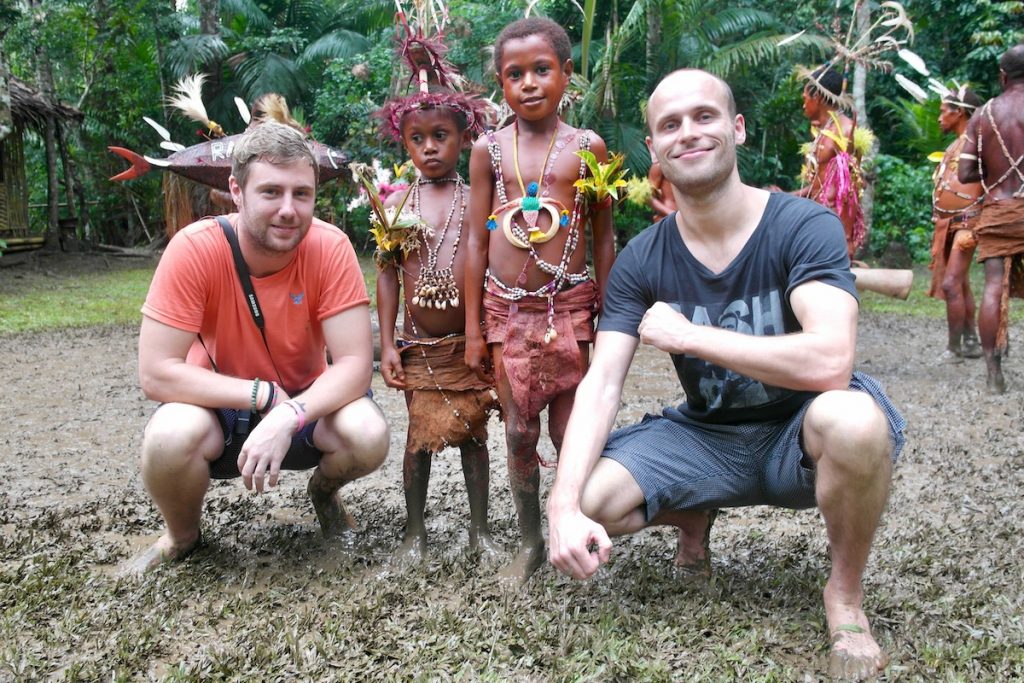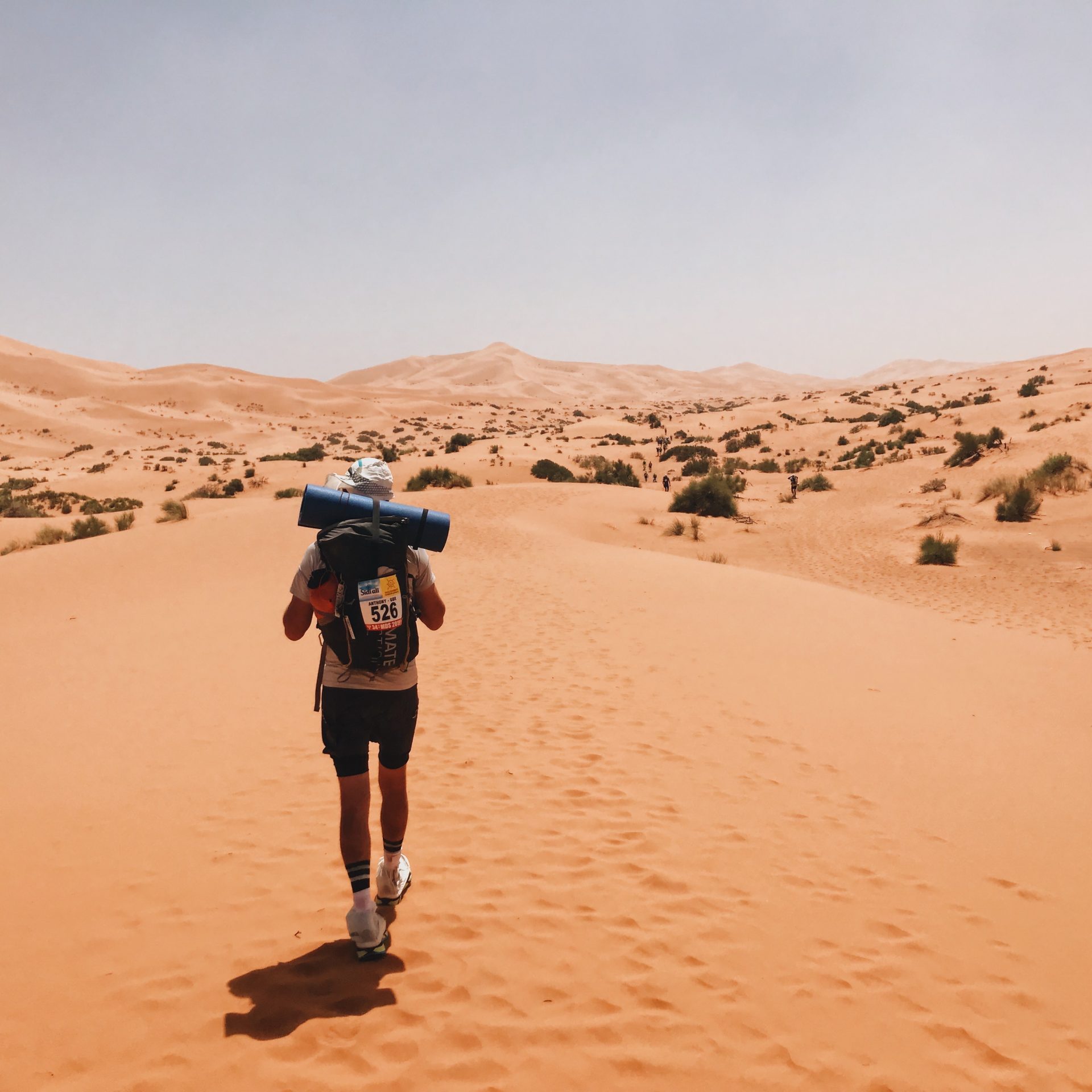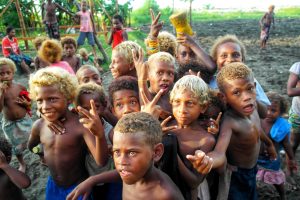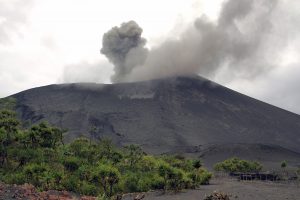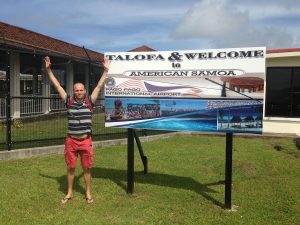Travelling in Papua New Guinea was so edgy and raw that it almost felt like being on another planet. Staying with one of the Papua New Guinea tribes in the heart of the rainforest was for sure, one of the coolest and most authentic experiences I’ve had since hitting the road a decade ago.
Outside of the odd few passionate scholars and avid travel documentary watchers, there isn’t too much common knowledge about the indigenous of this country and I was taken aback by the complexities facing the tribespeople of Papua New Guinea.
From my time visiting PNG with an open, curious mind I have put together this guide and at the end, I’ll share my experience of what it’s like to stay with a tribe in Papua New Guinea.
New Guinea, Papua New Guinea and West Papua
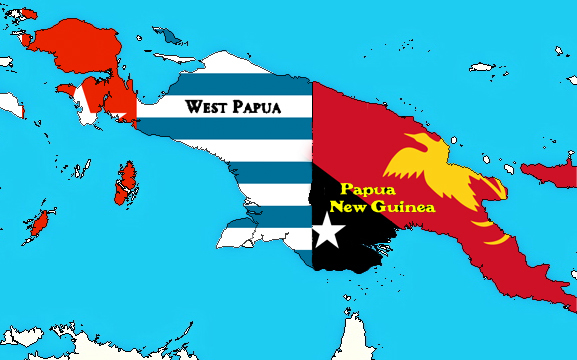
As the second-largest island in the world, referring to both New Guinea and Papua New Guinea separately often confuses people who are usually more aware of the latter, as opposed to the former.
Put simply, New Guinea is the island as a whole, which includes the independent state of Papua New Guinea to the east and the region of Western New Guinea (more commonly known as West Papua) which is, well, to the west of the island.
Papua New Guinea is an officially recognised country, whereas West Papua is officially part of Indonesia (with a murky historical path leading to that) and most West Papuans want their independence.
To complicate things a little more, the island of New Guinea was historically known as “Papua” before it came into contact with the West when settlers named it “New Guinea” after thinking that the local tribespeople looked similar to those they had encountered in the West African region of Guinea.
The indigenous people of West Papua and Papua New Guinea belong to the exact same ethnicity and have more commonalities than differences due to their native background. They are also ethnically and culturally similar to the Melanesian folk of the Pacific Islands.
How Many Tribes Are There in Papua New Guinea?
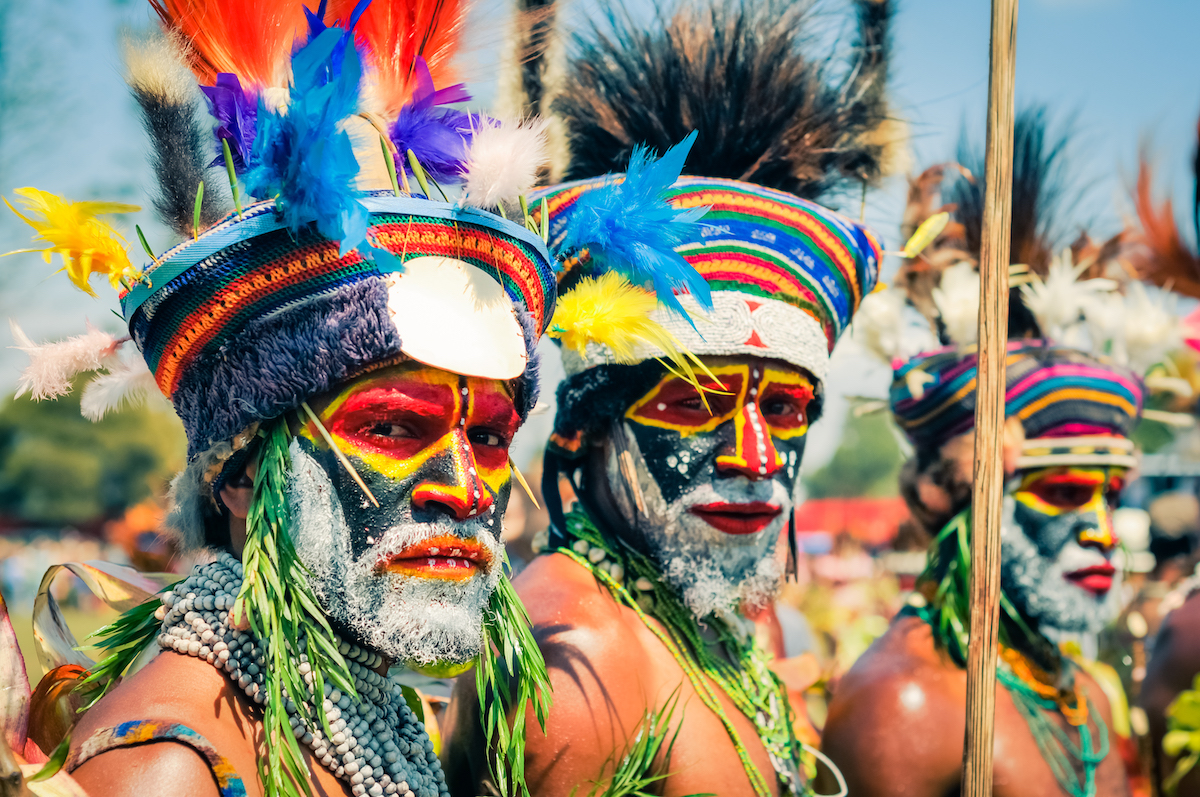
The island of New Guinea is home to over 900 different tribes, with around 312 tribes calling West Papua home and the rest residing in Papua New Guinea. Scores of these tribes share similar customs, languages and history, while other tribal languages and customs are completely unique.
Many of the Papua New Guinea tribes have had long contact with outsiders, European descendants and the modern government of the country. Others have little or no contact with outsiders and attempt to keep their isolation intact.
This huge number of tribes and peoples makes Papua New Guinea one of the most heterogeneous countries in the world. This diversity is only increased by the tribes being divided into several thousand separate communities, most with only a few hundred people in each.
What Problems Do Papua New Guinea Tribes Face?
In a world that is modernising at a faster rate than ever, the Papua New Guinea tribespeople are quickly getting left behind.
One of the toughest problems the tribes face is the constant encroachment onto their land – whether this is due to deforestation, the building of agricultural land or displacement for industrial projects.
While much of the modern world has turned its hands to restoring indigenous property rights throughout the globe, the governments of Papua New Guinea and Indonesia seem to be taking a backwards step.
Related Post: San Blas Islands Travel Guide To Paradise in Panama
The Papua New Guinea Minister for Environment and Conservation recently amended laws that allowed the national interests of the government to come before landowners and indigenous Papua New Guinea tribes.
In West Papua, the indigenous tribes face constant problems from the Indonesian state, which took the region under its control in the 1960s. Much of the region’s lucrative natural resources are being used; some would say exploited, with little to no return for the tribes of Papua.
It really is a messy business over there. When I climbed Puncak Jaya in West Papua, we flew over the largest gold mine in the world. We weren’t allowed to trek through the jungle as the local tribespeople were kidnapping foreigners as a ransom on a regular basis.
West Papua may have the biggest gold resources in the world, but the problem is that they don’t have access to who gets a share of the spoils. With the dark history surrounding this volatile area of the world, it’s also been marred with shady goings on by certain Papuan leaders who misused money for their gain while their people starved.
Classic.
One of the biggest problems faced by Papua New Guinea tribespeople is intertribal warfare, something that has continued for decades, ravaging the country and its tribal societies. I’ll have a crack at this with more details below.
Tribal Conflict in Papua New Guinea
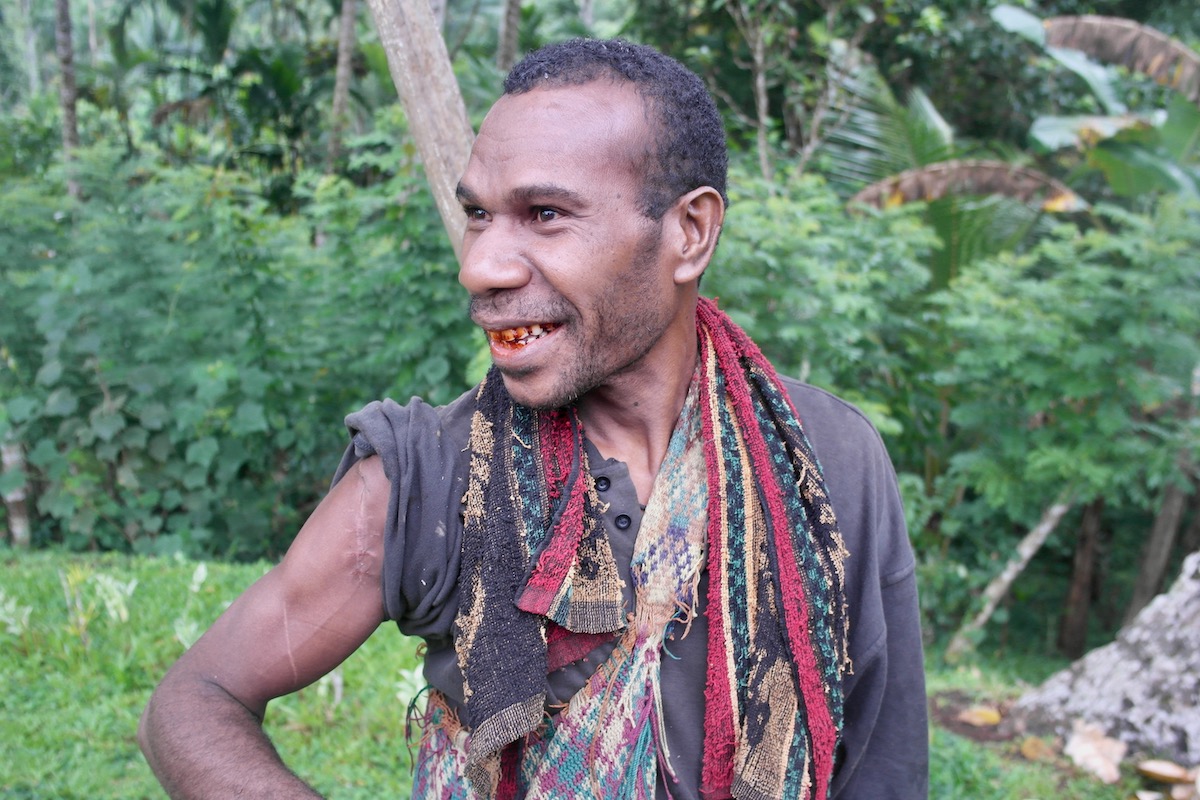
Tribal warfare has long been a strong part of tribal society in Papua New Guinea. Not unlike the parallels and differences that make Samoa and American Samoa, intertribal warfare is an integral part of the cultural and social makeup of the tribe.
With traditional rules and regulations in place, historically, the decision to go to war was taken collectively after much deliberation and permission given by the tribal chief.
This kind of intertribal warfare, carried out by pitched battles and using spears, bows and arrows, went on with little wider consequences for hundreds, if not thousands, of years.
The real fallout and destruction came in the modern era.
Tribal weapons were replaced by modern weapons, swapping the relatively inconsequential bow and arrows for the more destructive modern rifle and bombs.
Added to this is the younger tribesman’s attitude towards how this conflict is conducted. Once, the decision to go to war was decided through tribal meetings and ultimately with the chief’s permission. Now, many young and disillusioned men with access to modern weapons wreak devastation indiscriminately.
This leads to far more casualties and an increased level of violence, which makes it far harder for tribes to reconcile their differences and endless blood feuds ensue. Where there were once pitched battles, villages are now attacked under the cover of darkness as part of a scorched earth policy to kill and destroy everything in their path.
Adding to this, conflict was once restricted to the geography of the tribe, but now the violence has spilt out to all corners of society, with random attacks even seen in schools and clinics.
Many of them still go old-school though.
One of the tribesmen from the clan that I stayed with in Madang, nonchalantly showed off his machete scars to me, later confirming that he got let off lightly as some members of other Papua New Guinea tribes are found chopped up in bits, often decapitated.
Is It True That Papua New Guinea Tribes Are Cannibalistic?
If there’s one image of indigenous tribes in the Pacific, that has continued to captivate the minds of well-known geniuses on complex, worldly affairs, such as “Big Dave” down your local drinking establishment; is the notion that all Papua New Guinea tribes are all evil, bloodthirsty cannibals.
While this has been often overstated and enforced due to the undeniable smoke in what was once a very big fire, cannibalism is still not completely unheard of amongst the Papua New Guinea tribes.
Many of the tribes’ religions once revolved around the belief in spirits and demons, something that is still true today. Part of this belief system deemed that it was necessary to kill and eat a person they believed had been taken over by a “khakua,” otherwise known as a demon.
This practice was often carried out without mercy, with people denouncing fellow, or rival tribes for being a khakua.
Due to cultural changes, and some law enforcement by modern governments, many cannibalistic practices have decreased and no longer exist amongst the Papua New Guinea tribes.
One tribe, however, is thought to continue this practice right up to the modern-day, a tribe known as the Korowai. It is thought that the Korowai people only had their first contact with outsiders during the 1970s and many of its traditional, and, in this case, inhumane practices, still continue to be carried out.
In short, cannibalism with Papua New Guinea tribes (including West Papua) still goes on, mainly with the Korowai, along with some other isolated tribes and it is also used as an act of war.
It’s fu**ed up (I’m not too much of a bleeding-hearted cultural relativist myself), but there is still a lot of fabrication to claim how common cannibalism is in Papua New Guinea. It’s not as if people are chomping down on each other on a daily basis and a decent handful of the tribes are now Catholic, which is a religion that some take more literally than others.
Are There Any Uncontacted Indigenous Peoples of Papua New Guinea?
As contact with the outside world became inevitable over the centuries, there are little to no uncontacted Papua New Guinea tribes. Saying that many that have had contact with the modern world, choose to keep themselves as isolated from contemporary living as possible.
If we take the New Guinea island as a whole, there are a number of uncontacted indigenous peoples, mainly residing in the far west of the island in the West Papua province. Not much is known about these tribes, as it’s illegal for journalists and other organisations to enter West Papua under laws set down by the Indonesian government.
5 Fascinating Papua New Guinea Tribes
Papua New Guinea tribes are some of the most varied and fascinating communities on the planet. While many are linked by their linguistics and ethnicities, there are often huge differences in the way they express and organise themselves.
The nation is home to hundreds of different tribal groups, but by looking at just five of these fascinating Papua New Guinea tribes, we can get a real insight into the lives and ways of life of tribal communities throughout the country.
1. Huli Wigmen (The Huli)
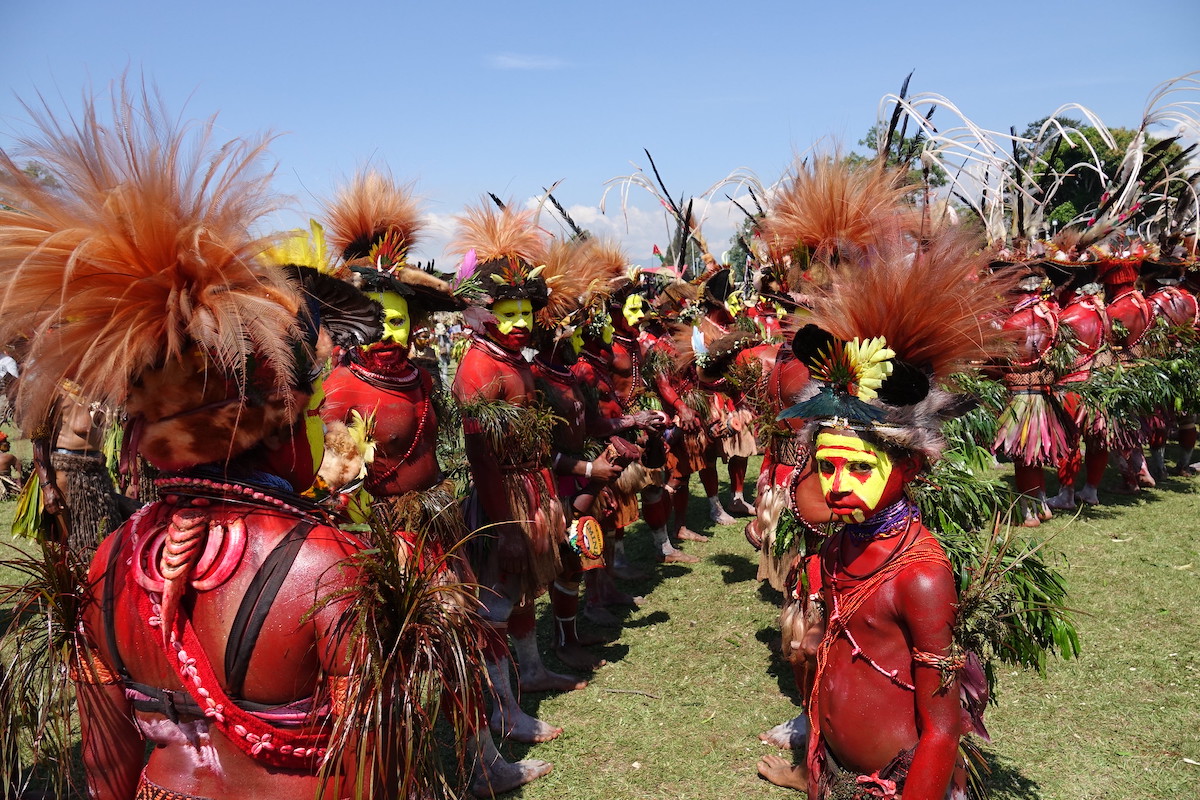
The Huli people, known by their colloquial name of Huli Wigmen, are one of the largest groups out of all the Papua New Guinea tribespeople. Numbering around 250,000, the Huli Wigmen live in the Hela Province of Papua New Guinea, in the western highlands of the country.
The tribe gets their name from the spectacular headdresses worn by the men, crafted from their very own hair. A sign of their manhood and coming of age, young Huli Wigmen are sent into the forest for months at a time to grow their hair. It’s thought that their headdress designs are made to replicate the birds of paradise found throughout Papua New Guinea.
2. Crocodile Men of The Sepik Region
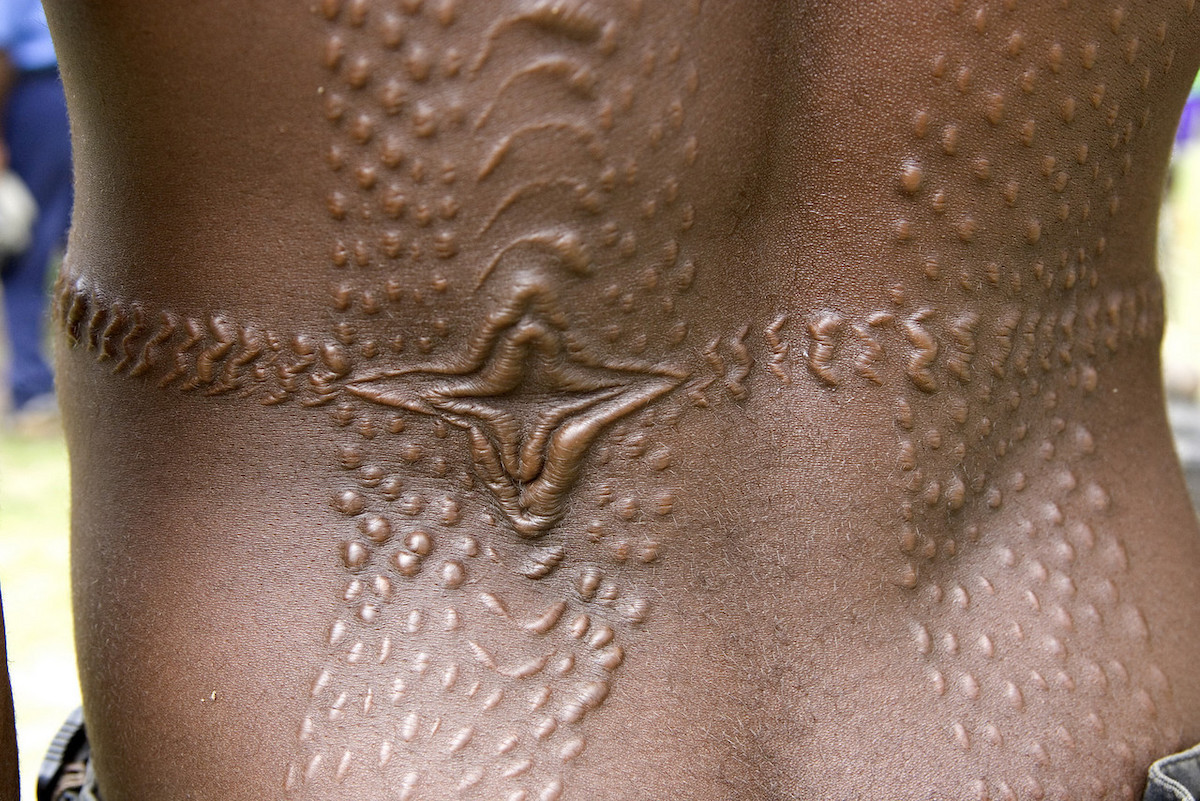
One of the most fascinating Papua New Guinea tribes is the crocodile men of the Sepik region. Living on the northern edges of Papua New Guinea, along the Sepik River, the crocodile men are at one with the animal they so revere.
The creation myth of the crocodile men of the Sepik region goes as such: a girl had been carried into the river by the crocodile and later gave birth to the crocodile people. Other legends tell of men living with crocodiles to learn the secrets of their power.
Either way, such devotion to the power of an animal that lives all around them has led the tribe to adopt a specialised ritual.
In another coming-of-age ritual, young boys undergo an extremely painful process of scarification. Etching deep cuts into their skin with sharpened bamboo, the skin heals in huge scars that replicate the hide of a crocodile. This is supposed to harness the strength and protection of a crocodile, feeding into the warrior class of the tribe.
3. The Asaro Mudmen (Holosa Tribe)
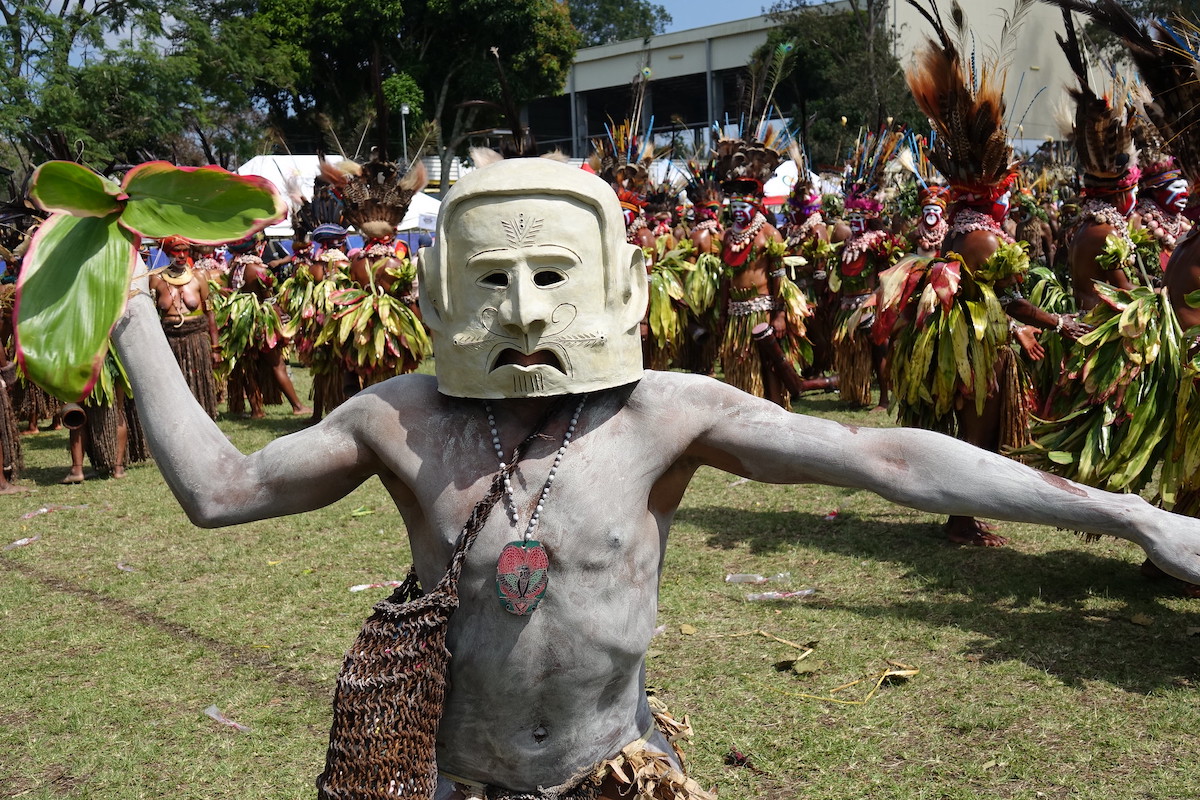
The Asaro Mudmen, also known as the Holosa Tribe, are a Papua New Guinea tribe living around the village of Goroka in the country’s Eastern Highlands Province.
Their identity and rituals hark back to a time when they were at war with a fellow tribe; the warriors retreated into a soaked mud riverbank. Having done so, they were covered in pale sunbaked mud, and they were mistaken as ghosts or spirits by their enemy.
Once the enemy tribe retreated in fear, the Asaro Mudmen were forever tied closely to the mud.
Today, the Asaro Mudmen don mud-baked masks with exaggeratedly pointed ears and brows with drooping tongues and pig bones piercing the nose. Their bodies are coated in a layer of clay-like mud which lightens in the sun.
Usually reserved for rituals and performances, the Asaro Mudmen have become one of the most well-known Papua New Guinea tribes and could rival the Thaipusam Festival in Malaysia for ceremonial theatrics.
4. The Baining People
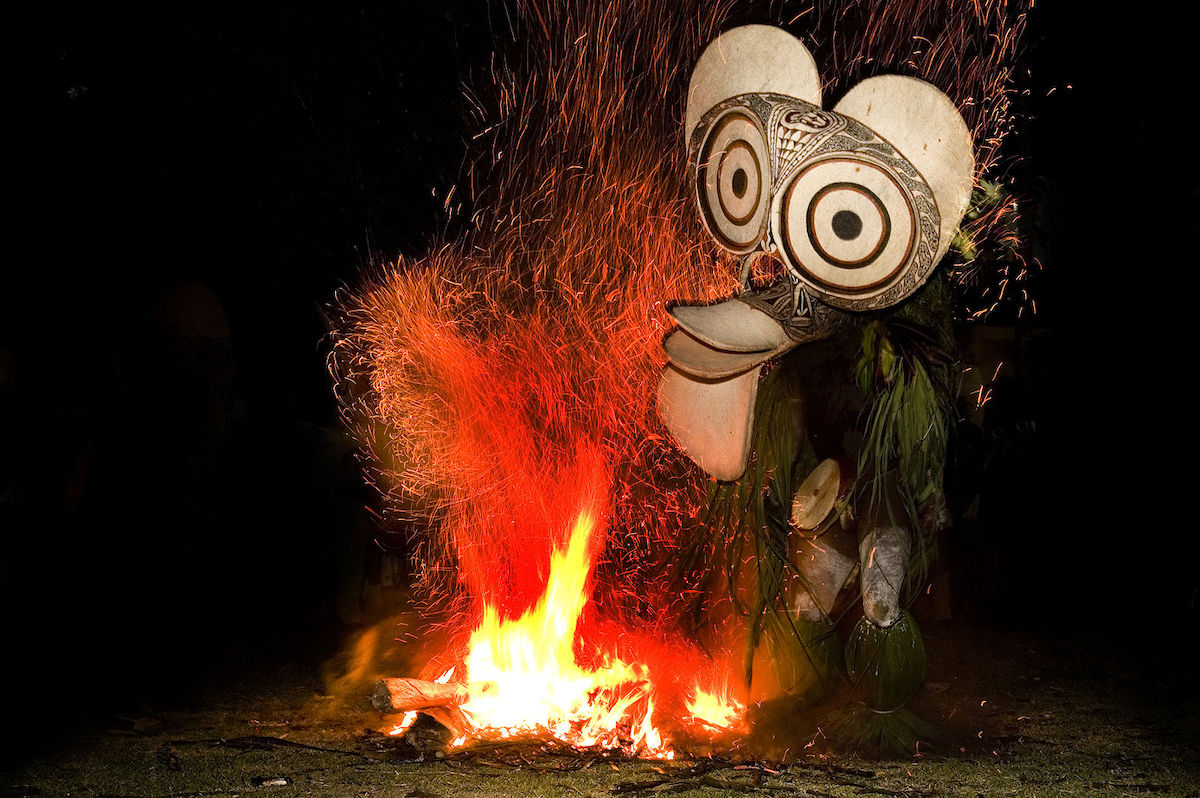
One of the oldest of the Papua New Guinea tribes, the Baining tribe lives amongst the Baining Mountains, on the Papua New Guinea island of New Britain.
One of the defining customs of the Baining People is their artwork and colourful costumed masks. Arguably the most defining triable performance in all of Papua New Guinea, the Baining tribe perform a compelling fire dance, where young men paint their skin white and put on elaborate masks with painted spiralling eyes and large lips.
Made from giant bamboo and bark, these masks are just as big as the people themselves and create a sight that you will not forget in a hurry. While wearing the masks, the Baining jump in and around huge bonfires, creating a deep connection with the spirits.
5. The Korafe Tribe
The Korafe tribe reside around the South East of Papua New Guinea, close to the town of Tufi at the country’s most eastern edge.
The tribe are known throughout the country, and across the world, for their elaborate facial tattoos, and perhaps more surprisingly, it is the women that have the tattoos. A right of passage for adolescent girls, the Korafe tribe tattooed the faces of the girls and women, a practice that is as old as the tribe itself.
Much like many of the Papua New Guinea tribe’s rituals, this practice is taken directly from the nature they see around them. The tattoos are supposed to replicate the Raggiana bird of paradise, which presents its vivid plumage upon reaching maturity.
Staying With Papua New Guinea Tribespeople in The Rainforest

Flying into Papua New Guinea after a month-long Australia road trip, was like going back into a gigantic time capsule…and I LOVED that notion, as soon as I became aware of it.
With the world being more and more globalised, it’s becoming increasingly harder to really tap into that feeling of pure originality or to escape the reality that everything is somehow tainted with a hint of contrived tourism.
It’s also nowhere near as hard as some whiny travel bloggers make it out to be, authenticity is out there if you open up your mind and are prepared to go out of your comfort zone.
I certainly went out of mine, and getting to Madang was a welcome bit of peace from the absolutely chaotic energy and instability of the country’s capital, Port Moresby. I was so happy to be out of there that I remained totally apathetic to the extortionate $400 USD return ticket to the province of Madang.
The island of Madang is typical of most coastal places in the Pacific Islands; near-perfect, clear blue waters, with a backdrop of gorgeous greenery and bright colours, tropical birds, volcanoes and all the rest… postcard images everywhere you turn.
The island is so beautiful that it was the shooting location for the movie ‘Robinson Crusoe,’ our hotel driver informed me that the room I stayed in was the same resting place for the head of Pierce Brosnan during filming.
After a couple of days (literally and metaphorically) enjoying the fruits of Madang, my mate Johnny and I enquired with a guy in our hotel, who we struck up a friendship with, about staying with a tribe in Papua New Guinea – right there in Madang.
He seemed understandably hesitant, however after qualifying us with a couple of rules and cultural faux pas, and also telling us to manage our expectations of a potential rejection; he promised to ask the tribal chief if it was ok for us to visit for a few days (including a night’s stay with the people).
Much to our joy, the big fella at the helm gave consent and before we knew it, we were in a jeep with members of the tribe, including curious children and a piglet shitting all over the truck.
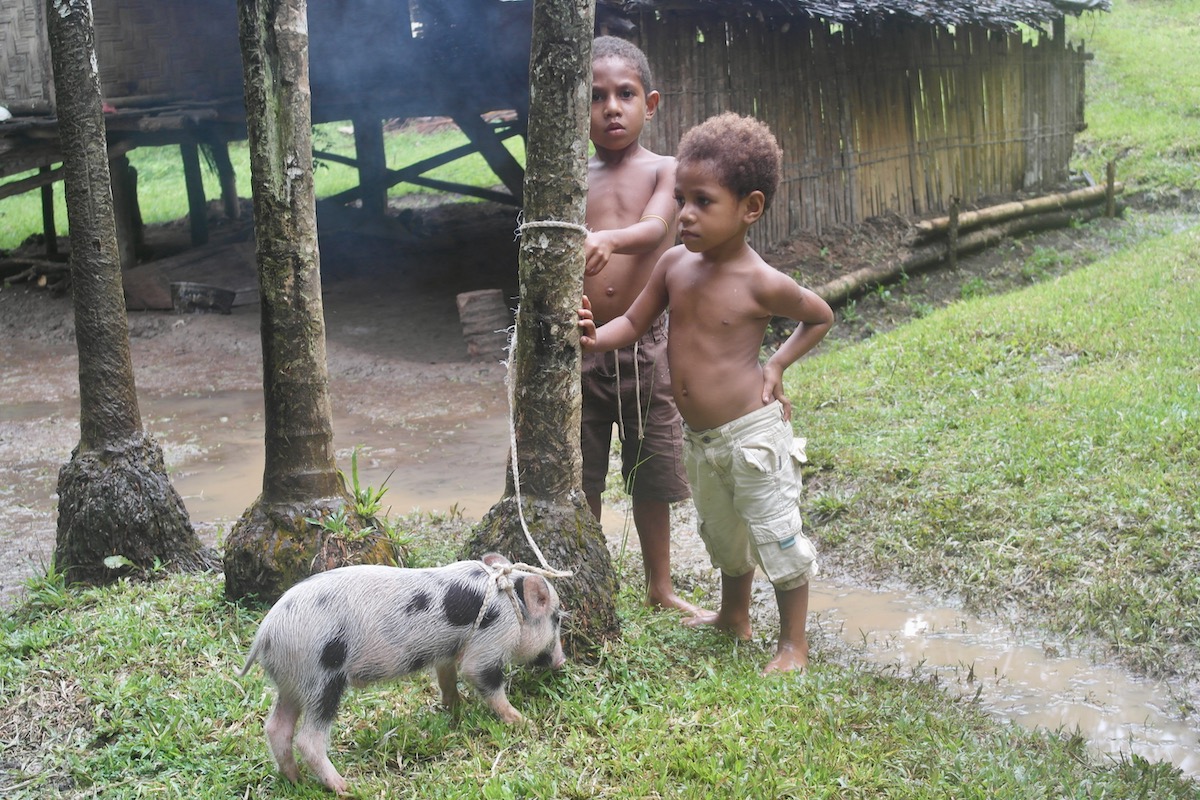
Looking back, I guessed this was lunch (although it’s more than likely they’d wait until it was fatter for that) the food that we had during our time there were rural eggs and cassava and we brought along mountains of fruit for the tribe, to give our thanks for the privilege of being visitors in their home.
After an hour-long hike through the swampy jungle, we were welcomed by the whole tribe, adorned in loud and bright colours, feathers and necklaces with teeth of both humans and animals and their own tribal makeup.
By Western standards, they were half-naked. I sadly lost my first Instagram account for posting a photo of a topless tribal lady.
Get a grip, ‘Gram.
Every single member of the tribe was smiley, and jovial and looked genuinely happy to welcome us as guests. Many of them approached us with smiles and I lost count of how many of them gave a blessing to us in their own tongue, our main man in Madang who drove us to the rainforest loosely translated into Pidgin English.
A far cry from the chilling tales of primitive, knuckle-dragging savages that we are so used to hearing about in our locals.
Within 15 minutes or so the tribe wasted no time and went straight into the moment we had hoped we would see…the sing-sing, which was apparently the sing-sing that showed gratitude and appreciation and good wishes to the visitors of the clan.
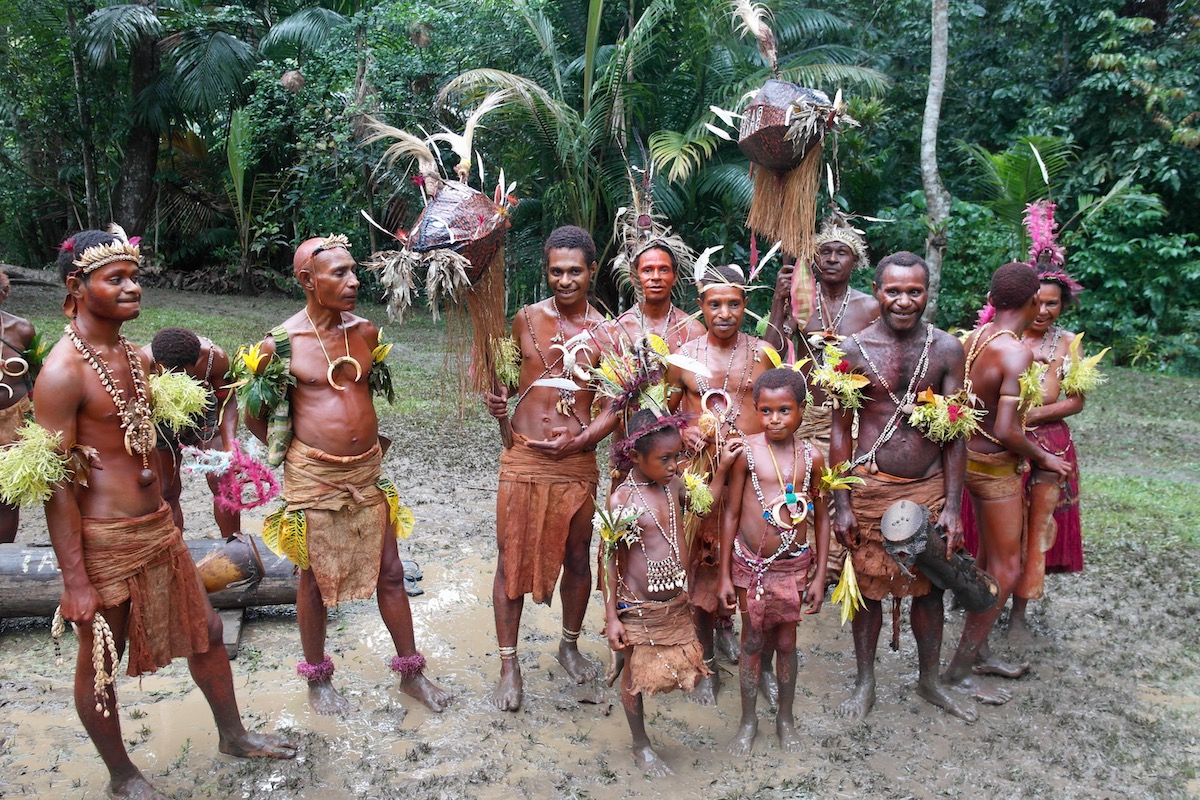
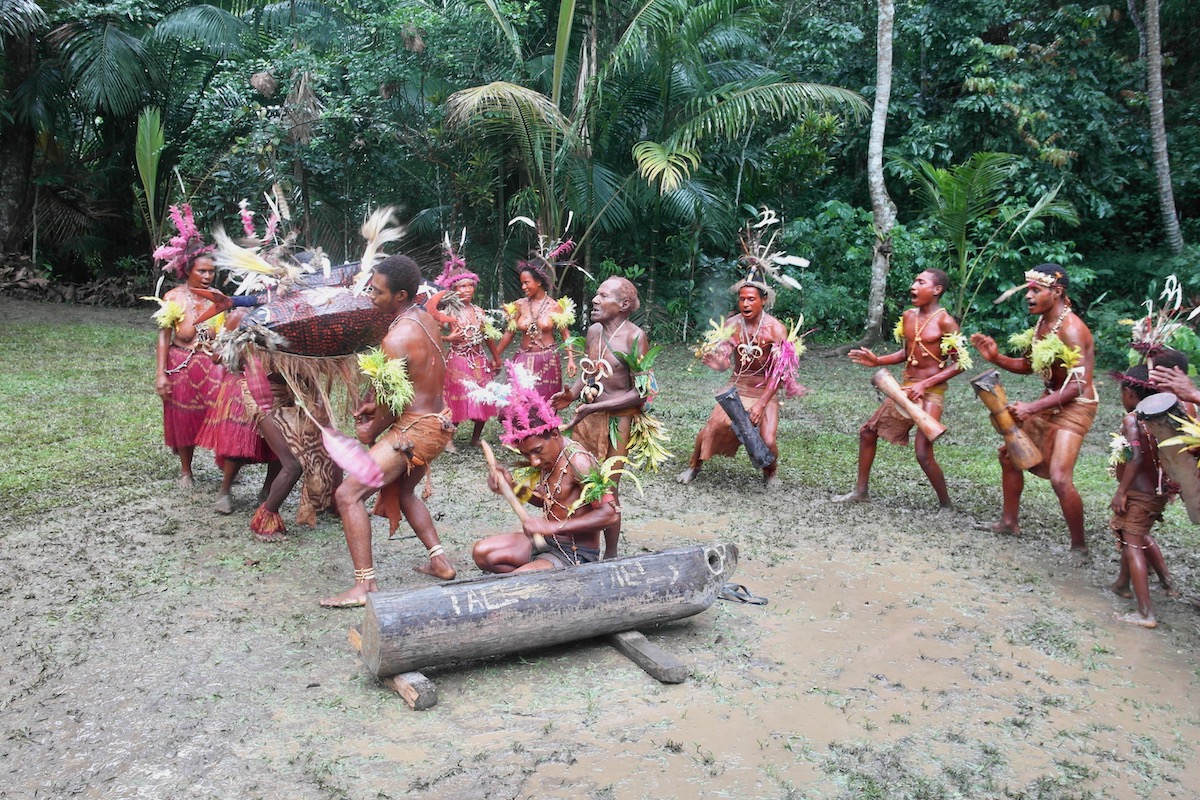
The atmosphere was fervent and spine-tingling. It really did feel mystical, I took photos of course (and videos to come) but this was genuinely one of those moments where I had to pinch myself and breathe in every moment… as I wasn’t sure when I was going to experience something remotely close to that ever again in my life.
Meeting the main man (tribal leader) and his crew was the icing on the cake. Instead of the usual small talk about job titles that we are used to, they seemed to care more about family – did we have any children? Why not? Why weren’t we married to a woman already?! What was the name of our mothers and fathers? Brothers and sisters? How many did we have?
Sincere love and compassion for family and the welfare of its members is something that transcends all cultures around the world, and Papua New Guinea tribes are no different. If anything, they’re even more intense about it.
Before we went off for another hike and to put our bags in the hut where we would sleep that night, the rain absolutely hammered down and the tribes got up to perform another sing-sing, even handing us makeshift umbrellas – the coolest-looking I’ve ever seen in all honesty!
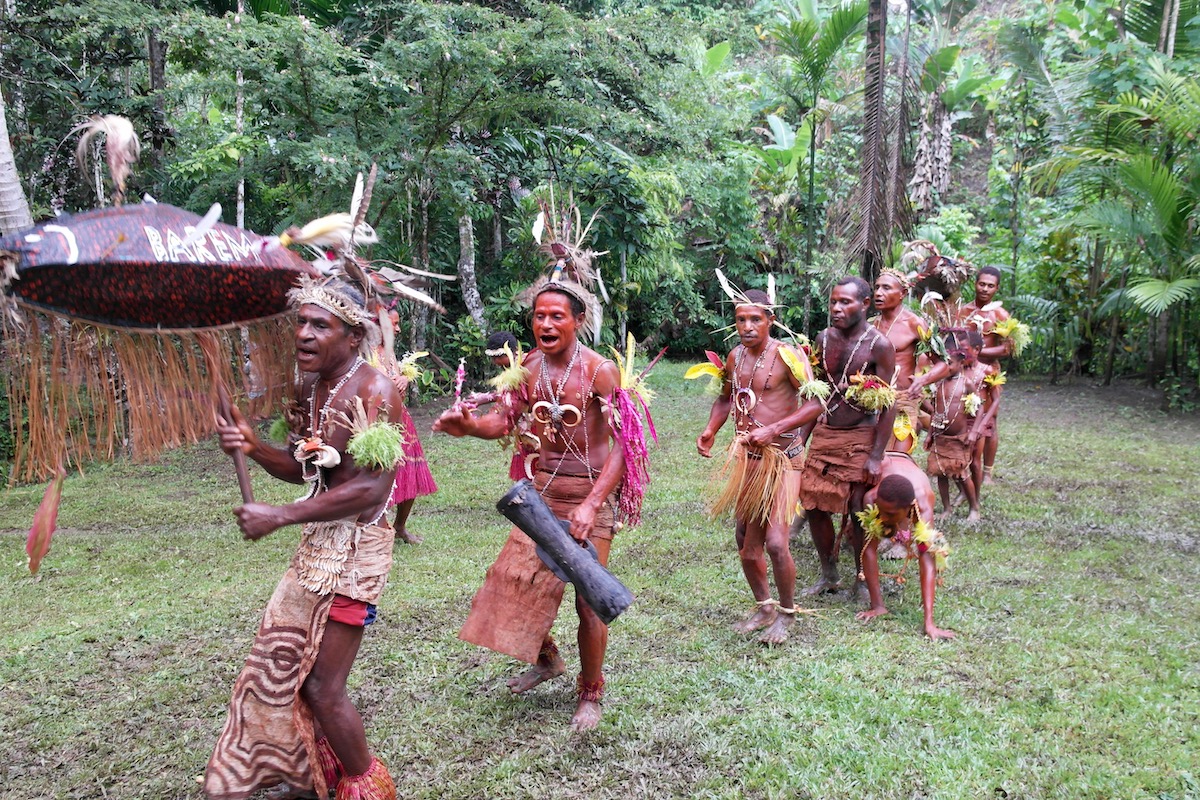
When our guide left us with the family, it felt even more like pure adventure travel as only a handful of the guys could speak to us in Pidgin English. So it was either learn fast, read between the lines, or try to communicate via hand and facial gestures.
The bellowing tonal scream that one old lady made, which was the call to let the villagers know that dinner was served, was one of the most glorious things I have ever witnessed on the road.
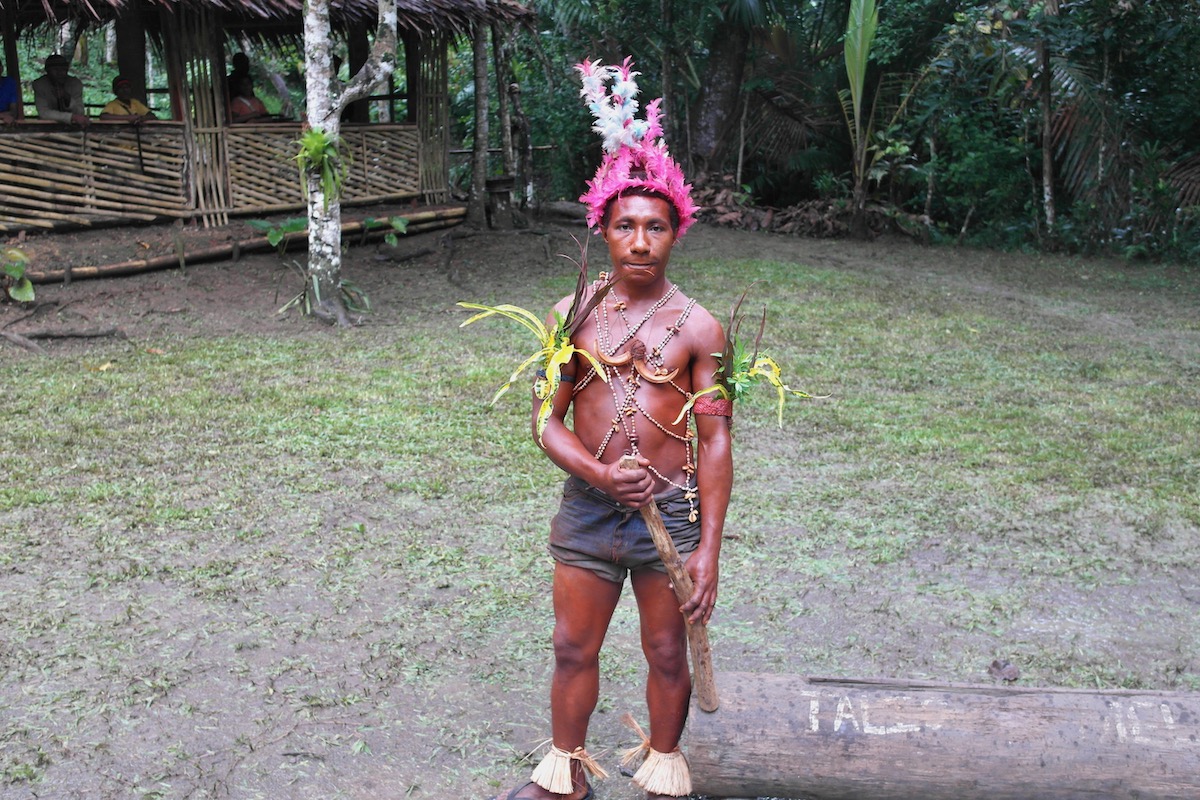
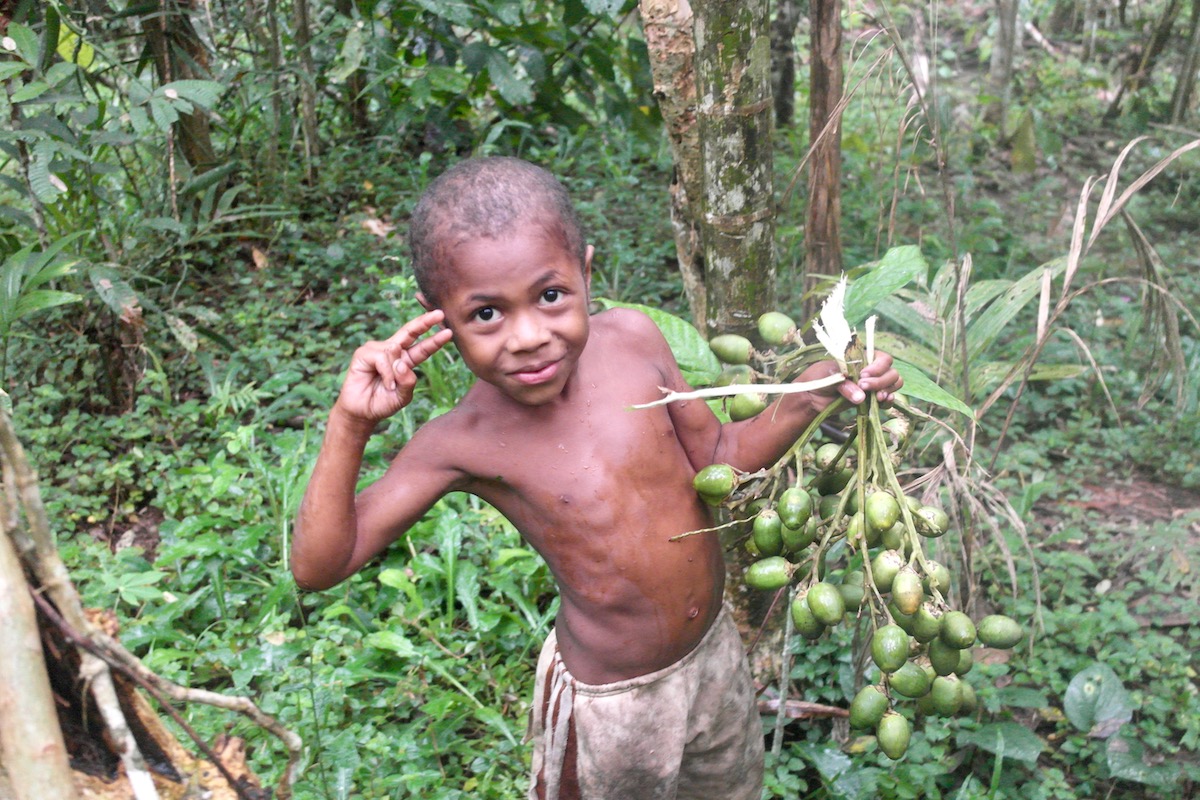
We went to sleep pretty soon after sundown – no alarm clocks, or street lights in the jungle, just the earth beneath your feet and the sky to tell you when to rest when to eat and when to get up – and we had the luxury of having the experts guide us through it all.
Just before bedtime in my hammock, I got a real good laugh when Johnny went to the ‘toilet hut’ for a number two, recoiling back out in panic mode seconds later… because he saw a gigantic rat in there.
Vengeance paid out promptly the next morning when I woke up freaking out to an insect on my head that looked like it was sent from the very Gates of Hell.
Soon after that, we saw a much cuter wildlife member of the tropical woods.
“What the hell is that?!”
I thought I’d seen it all when it came to weird animals around the world, but clearly not. I hadn’t even seen anything like it in a documentary before, the best way I can describe it is that it looks like an albino sloth – however, it’s no relation to the sloth at all!

Read more about the Cuscus animal of Papua New Guinea here.
On the hike back, I asked one of the main men about the conflict between Papua New Guinea tribes. He responded by showing me machete wounds all over his arms and back and more alarmingly, a fresher cut on the palm of his hand and one of his shins.
He explained to me that a little over a week ago (which took a while to explain, as they see time differently from us) he woke up to see a rival tribesperson standing over his baby’s hammock in the middle of the night.
A few days of in-fighting occurred between both tribes, a couple of lives were lost and some blood was spilt before the main bosses (tribal chiefs) sat down together and agreed to a peace treaty.
Just a regular day in the life of Papua New Guinea tribespeople!
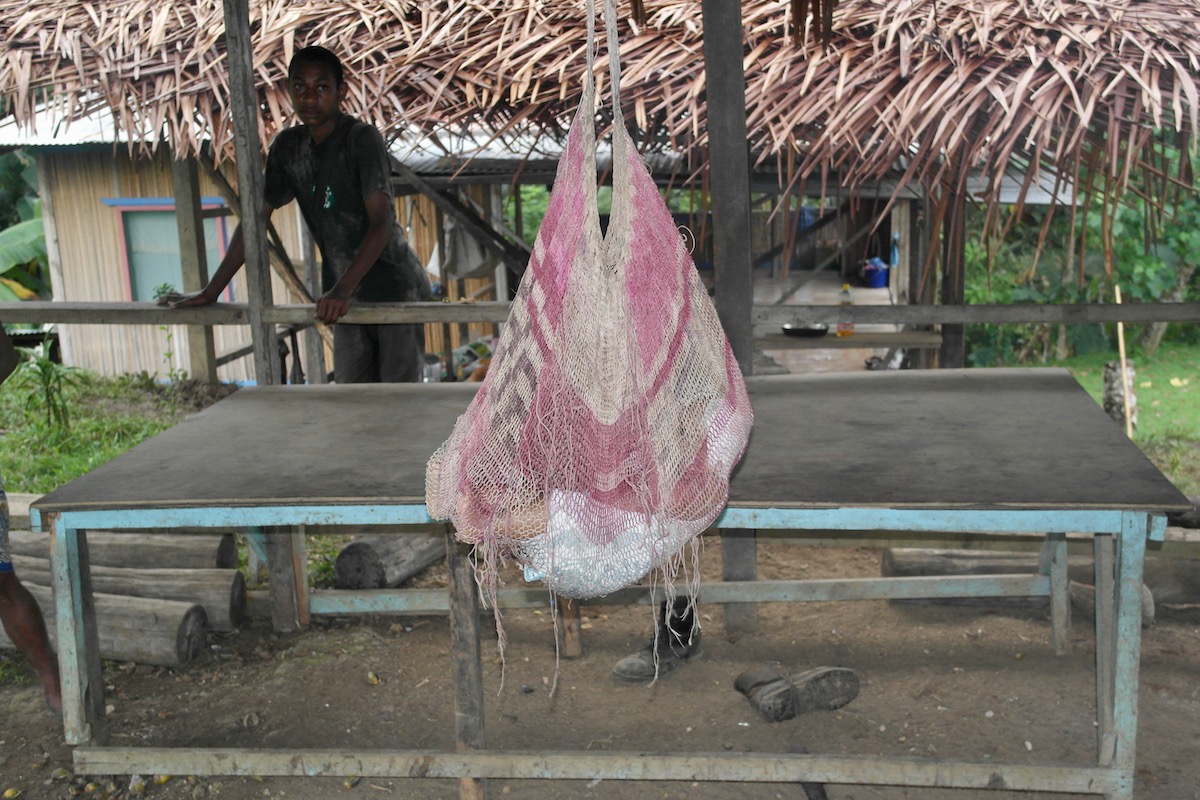
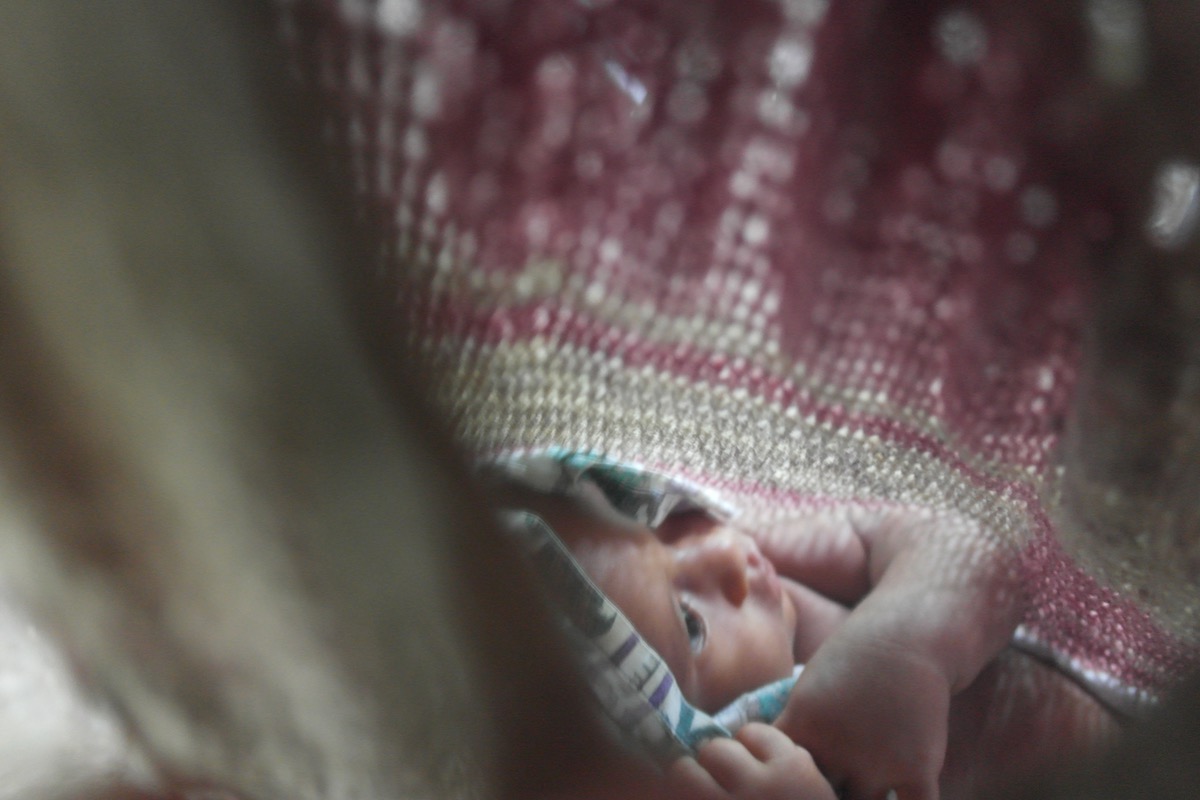
The hike back to Madang was another marshy and laborious hike in parts, with help from the kids who were just like any other kids on earth; a little curious, a tad naughty and ever-so-sweet in parts – holding our hands at times when we clearly showcased a lack of balance in comparison to their strong and sturdy jungle feet and superior composure.
We both felt so honoured to stay with one of the enigmatic Papua New Guinea tribes, and it’s not a lazy cliché when I say that it was truly an unforgettable experience.
